‘Stranger things have happened’ is an easy thing to say for anyone who has a job at sea. Indeed, a booming technology development of the recent years has left almost no room for mystery in our world, but the sea still provides some riddles that the human genius is unable to crack.
Many mysterious ship disappearances have happened long before AIS, satellite navigation, CCTV and forensic medicine’s time. So, maritime experts are left to theorize what, for instance, Christopher Columbus meant when he reported a ‘great flame crashing into the sea’ and ‘strange candle lights appearing in the sea’ during his voyage via the Bermuda Triangle in 1492.
Yet, inexplicable maritime accidents continue happening even 500 years later. For example, the earlier described El Faro accident; an American cargo vessel that sank on the 1st of October, 2015 en Route to Puerto Rico claiming the lives of all 33 crew members.

The fact (VDR evidence) points that it was the Master’s decision to pass directly through Hurricane Joaquin which was raveging in the region at the moment and turned from ordinary storm to Category 4 hurricane alarmingly fast. There are still disputes regarding the reasons behind Captain’s actions.
So today we have rummaged through the centuries of maritime history to select 5 most interesting episodes of mysterious ship disappearances or abandonment.
1. Mary Celeste: the Perfect Mystery
The case of Mary Celeste is the author’s personal favorite. The sad thing about vanishing boats or ‘ghost ships’ is that once you look at them closely and unearth some unpopular facts about construction defects, suspicious crew or weather conditions they turn into mundane maritime accidents.
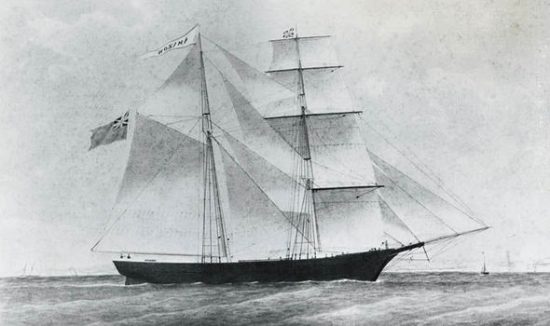
But Mary Celeste is completely different. 150 years passed; and still neither theory explains what happened to the vessel conclusively. So, here are facts as they are known.
- Mary Celeste was an American merchant brigantine 103 ft (31 m) long and 25.7 ft (6.6 m) wide (after refit in 1872).
- Captain Benjamin Briggs, who was also one of the investors, took over the vessel in October 1872 in New York, the USA. Mary Celeste was loaded with 1 701 barrels of industrial alcohol to be delivered to Genoa, Italy.
- Captain Briggs had had 18 years of sea-going experience and took his wife and 2-years old baby daughter into this voyage. The rest of the crew consisted of 7 equally experienced seamen handpicked by Briggs.
- On December 4, 1872 the Canadian brigantine Dei Gratie spotted Mary Celeste midway between the Azore Islands and Portugal.
- The vessel was abandoned with a lifeboat missing. The final entry to the ship log was dated 8 a.m November the 25th and positioned Mary Celeste near Santa Maria island (the Azores), almost 400 nm from the place of the encounter.
- Mary Celeste was seaworthy with a slightly wet interior and disheveled sails. All personal belongings and food stores were in place. Captain’s navigational instruments were missing.
No traces of a lifeboat or its passengers have ever been found. So the mystery is why the experienced Master and crew decide to leave a perfectly good vessel?
Theory 1: Pirates
When Dei Gratia brought an abandoned Mary Celeste to Gibraltar, the salvage hearings and investigation took several weeks. The first and most popular theory was that the vessel was attacked by pirates who made the crew leave in a lifeboat.

However, Mary Celeste bore no signs of a struggle. More to the point, vessels’ valuable cargo, provisions and all personal possessions were left intact.
Theory 2: Human Error
Three crew members of Dei Gratia who came onboard of the abandoned brigantine have spotted a hearing rod lying on the deck. Together with the wet interior it led experts to the version that a hurried leaving of the vessel was caused by waterspout.
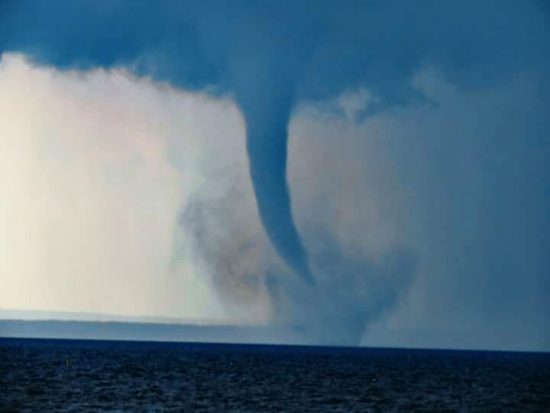
This natural phenomenon generates a low barometric pressure which together with malfunctioning pumps could have created an impression that Mary Celeste was taking water rapidly.
The obvious counter-argument for this theory is that Briggs was knowledgeable and experienced, so would not have been fooled by a hearing rod. In addition, the log suggests that the vessel was abandoned in the morning (records were made hourly), so they would have been able to see Mary Celeste floating for a long time. Why didn’t they return?
Theory 3: Seaquake Leading to Explosion
There are also some indications that a hurried escape was caused by another rare natural phenomenon, a seaquake. The Azores are known as one of the most seismically active zones on the planet; and seaquake might have caused noxious fumes to escape and accumulate in the holds.
Open hatches in cargo holds point at some inspection or ventilation attempt, so Captain Briggs might have ordered to leave the vessel in fear of an explosion. But we again get stuck at the question why didn’t they return from the yawl when it became obvious that there is no danger.
Some sources assume, though, that the lifeboat hadn’t been secured properly and a sudden blow might have driven Mary Celeste from her crew.
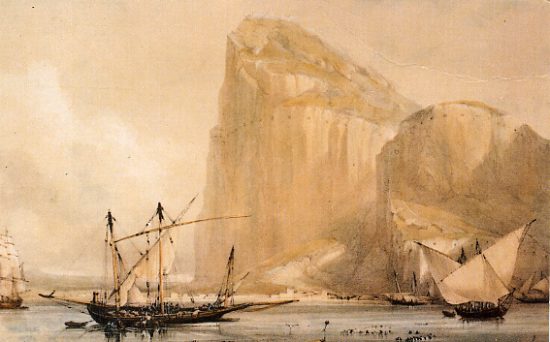
Theory 4: Foul Play
The Gibraltar salvage committee has also considered two unappealing possibilities:
- The Dei Gratia crew had lured seamen and passengers of Mary Celeste to their vessel and then slaughtered them all staging this elaborate charade to receive insurance payments.
- Captains of Mary Celeste and Dei Gratia had conspired in an insurance fraud. They were known to be friends.
Again, neither version looks viable as Mary Celeste was faster and had left New York 8 days earlier; meaning that two vessels should not have met under normal circumstances at all.
The insurance fraud version crumbled as it became known that Captain Briggs had left his 7 year old son with his grandmother in New York.
Gibraltar salvage hearings have resulted in payments of only ⅕ of the total ship and cargo value as the jury “was not convinced in the absence of a foul play”.
Mary Celeste was sold and had a stormy career as extensive press coverage made her especially unpopular within the maritime community.
By the year 2021 the mystery of Mary Celeste remains unresolved.
2. USS Cyclops: Beginning of the Bermuda Triangle Story
This case is definitely worth appearing in our Top 5 Mysterious Ship Disappearances list as it drew public attention to the Bermuda Triangle. USS Cyclops was one of US Navy colliers with DWT of 19 670 t and the crew of 309 seamen.
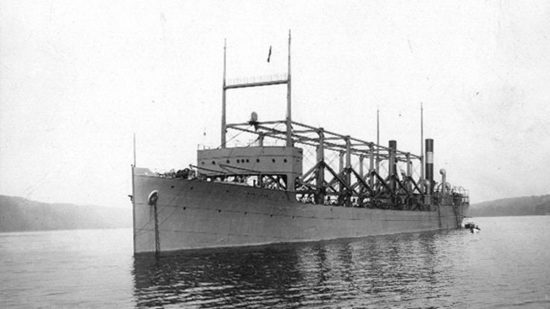
Her disappearance in early March 1918 has become the first such massive loss of life in a single maritime accident in the American history.
USS Cyclops was a relatively new vessel; she was launched in 1910 and commissioned in 1917 to fuel American Navy Ships during WW1. The vessel served along the East Coast and on 16th February 1918 left Rio-de-Janeiro en route to Baltimore loaded with manganese ore. USS Cyclops made stops in Salvadore and Barbados (4th of March 1918). Then her trace disappears.
The U.S.Navy Annual Report just declares its loss, but debates about Cyclop’s fate were rather heated. 4 theories have taken a definite shape after a while.
Theory 1: Maritime Accident
This version was based on several incontrovertible facts:
- USS Cyclops was overloaded with manganese ore when she left Brazil;
- Captain sent a report from Rio that starboard engine had a cracked cylinder and was not operative;
- Other vessels confirmed a severe tropical storm in the region when USS Cyclops was at sea;
- Manganese ore can turn into a slurry when wet affecting stability as a result.
Contemplating these facts can lead to certain and boring conclusions about the disappearance of USS Cyclops, but here comes the German influence theory.
Theory 2: German Trace
After the mysterious disappearance of USS Cyclops the Office of Naval Intelligence has looked at the controversial figure of Captain Worley more closely. They have discovered that his real name was Johan Frederick Wichmann. He was born near Hanover, Germany and entered the USA by jumping from the ship in 1878.
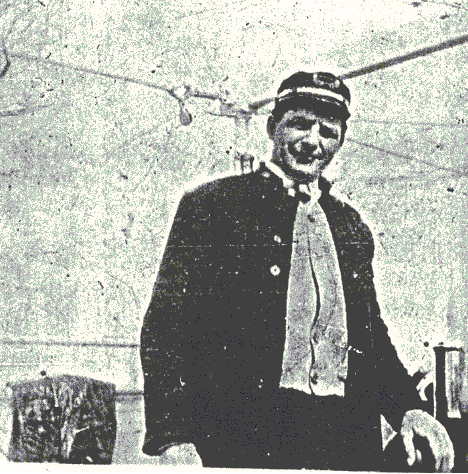
His maritime career was spotted with violence towards his crew and included opium traffic from the Far East to San Francisco. Thus, many have suspected that Captain Worley had just handed the vessel to the Germans.
The problem with this theory is that no records about USS Cyclops have been found in Germany afterwards.
Theory 3: Critical Defect
Another plausible theory occurred when Cyclop’s sister ships USS Proteus and USS Nereus vanished in the Bermuda triangle in 1941 without trace as well. Experts have discovered that vessels had a critical defect in the central I-beam that corroded easily affected by some cargo. Given that the area is known for fierce storms, all ships might have sank due to this construction defect aggravated by weather conditions.
Theory 4: Bermuda Triangle Mystery
Naturally, there are people who attribute the disappearance of USS Cyclops to the paranormal activity in the Bermuda Triangle. To clarify, this is a region in the Atlantic Ocean roughly bounded by Miami, Bermuda and Puerto Rico.
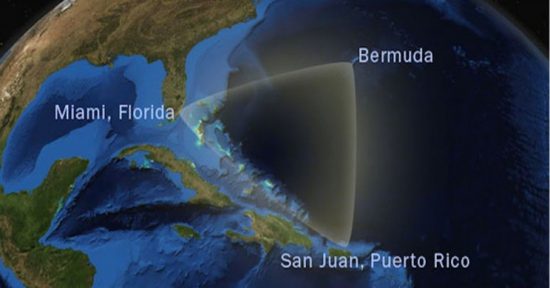
Many ships and aircrafts have vanished in the area, so adepts of paranormal theories claim that the Bermuda Triangle:
- Contains a wormhole to another dimension;
- There are gates to Hell there;
- There is considerable Alien’s activity;
- Time warps there;
- Atlantis people cause the disappearances;
- There is a reverse gravity field;
- Sea monsters infest the area.

Meanwhile, the density of traffic may account for the frequency of accidents given that:
- The Bermuda Triangle gives birth to violent storms. Some experts even point at hexagon shaped clouds that are able to generate kind of ‘air bomb’ winds. This rare natural phenomena occurs in the region more often compared to other places on Earth.
- There are some gravity anomalies, indeed. Those make compass spin, but can be encountered in many other places as well.
- Methane hydrates are found in the Bermuda Triangle. Australian laboratory experiments have confirmed that gas bubbles are able to sink a ship by reducing density of water considerably.
3. SS Waratah: Titanic of the South
Another intriguing ship disappearance took place well away from the Bermuda Triangle. British passenger 500-feet-long (152.4 m) vessel Waratah vanished without trace in July 1909 claiming the lives of 211 people onboard.
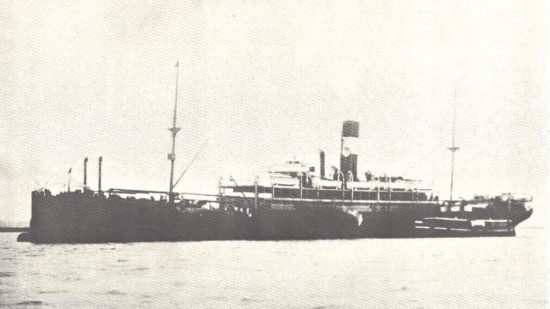
Facts about SS Waratah:
- Waratah is often called the ‘Titanic of the South’ as she was a big (9,339 t) and new steamship travelling between Europe and Australia.
- The boat left Adelaide on July 7th, 1909, made it safely to Durban (South Africa) and left for Cape Town on the 25th of July, 1909.
- One of the passengers, engineer Claude S. Sawyer, disembarked in Durban and ‘cabled’ his wife that “Thought Waratah top-heavy, landed Durban.”
- Later the same day the weather deteriorated while Waratah was glimpsed by a bigger steam ship.
- Tanker Harlow’s crew admitted that Waratah emitted a lot of smoke (they thought the vessel had been on fire). Then, they saw 2 bright flashes and Waratah’s running lights disappeared.
Vain Searches for SS Waratah
The fate of Waratah and her over 200 passengers remained unknown for almost 90 years when Emlyn Brown, marine explorer from the South African National Underwater and Marine Agency (NUMA), announced that he had discovered the location of the wreck off the Eastern Cape coast in July 1999.
However, the later update made by Dr. Brown in 2001 shows that Waratah keeps her secrets:
“…Although the submarine dive to the wreck was flawless, the wreck we thought was the Waratah, is in fact not, repeat not the Waratah,” …. “It is a cargo ship carrying military hardware, tanks, tires, trucks, etc. that we now know was sunk by a U-boat in 1942. I, and all involved are stunned beyond belief, and almost speechless at what was finally seen on the ocean floor.”
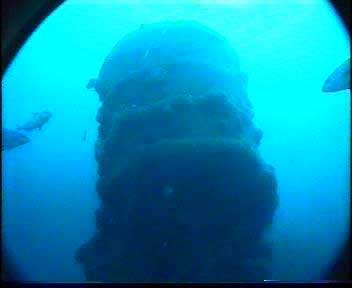
The findings are impressive indeed, but SS Waratah remains one the great maritime mysteries. The last search took place in 2004.
4. SS Baychimo: Ghost Ship of the Arctic
The curious case of ship abandonment happened on October the 1st 1931 near Barrow, Alaska. Steamship Baychimo carrying the cargo of furs got trapped in pack ice and was left by her crew who took refuge in the town nearby.
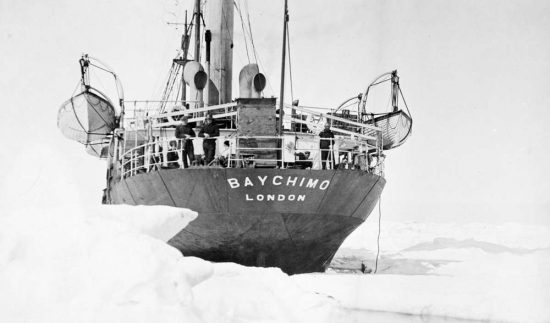
Meanwhile, the vessel broke free and wondered for a week before finding herself pinned by ice more thoroughly in the Hudson’s Bay. 22 crewmembers were evacuated while 15 seamen remained in the wooden shelter they built next to the vessel taking the most valuable furs and guarding the rest of the loot .
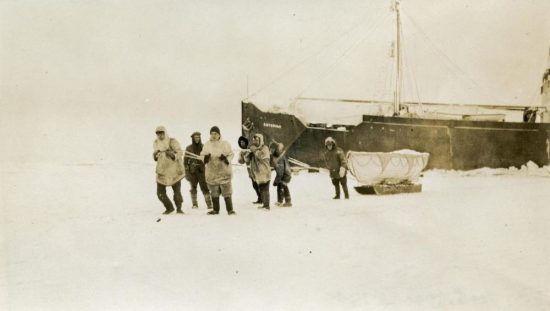
Another week passed; and on the 15th of October 1931 the vessel vanished during a fierce blizzard. Remaining seafarers concluded that she had not survived the storm and sank, but a few days later an Inuit seal hunter said that he saw Baychimo drifting 42 nm (72 km) away from the camp.
It appeared he was right, Baychimo had been seen drifting abandoned for almost 40 years after that. The last sighting is dated 1969 when she was spotted stuck in ice in the Chukchi Sea. It seemed an unusually long life for an unmanned ship, especially in the area notoriously famous for its winter storms and pack ice.
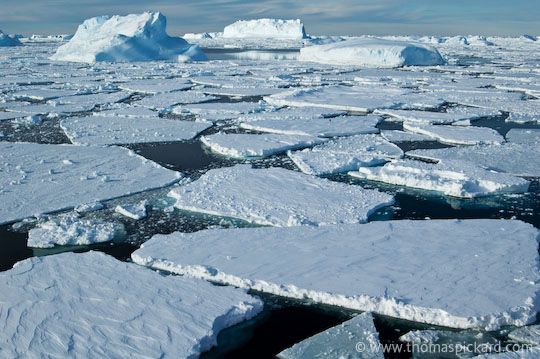
Baychimo is often referred to as the ‘Ghost Ship of the Arctic’’; and the name is justifiable. There had been several attempts to board the vessel, but every time it was abandoned again either due to the new crew’s inadequacy to salvage such a vessel or because of a rough weather.
The ultimate fate of Baychimo is unknown. In 2006, the Alaskan government initiated a search for the ‘ghost vessel’ drifting or wrecked, but it hasn’t been found.
5. USS Scorpion
Many sources associate the disappearance of USS Scorpion with the Bermuda Triangle, although the accident took place some 400 miles off the Azores. Meanwhile, taking the submarine from the ‘Devil’s Triangle’ shade doesn’t make the circumstances of her loss any less mysterious.

It is easy to concoct a mystery from a brigantine vanishing that happened almost 200 years ago, but USS Scorpion was a US Navy nuclear submarine with at least 2 nuclear-tipped torpedoes, nuclear powered propulsion and all the spy equipment that was available at a time.
- The submarine (SSN-589) belonged to Skipjack-class and was commissioned in 1960.
- The crew was experienced; the Commanding Officer even had a Navy Commendation Medal for taking shots of Soviet missile launches. They managed to penetrate into the inland Russian waters, film the launch from periscope and flee unscaved when finally noticed by Soviet Navy ships.
- USS Scorpion underwent a protracted overhaul in 1967 in her homebase of Norfolk.
- She departed home to the US East Coast in May 1968. The last radio check-in was on the 21st of May, 1968. USS Scorpion reported her position 50 miles off the Azores; then she disappeared.
- Later this year, the wreck was located at 3000 m depth some 400 miles southwest of the Azores. USS Scorpion was broken in two pieces and it was obvious that the operations compartments had sustained major damage.
Why did USS Scorpion Sink?
Theory 1: Attack by Soviet Submarine
The first theory that surfaced put the blame on some unidentified Soviet submarine that might have attacked USS Scorpion. The Cold War between two countries was acute at a time, but the Naval Board of Enquiry finally stated that there were no vessels within 200 miles where Scorpion sank.
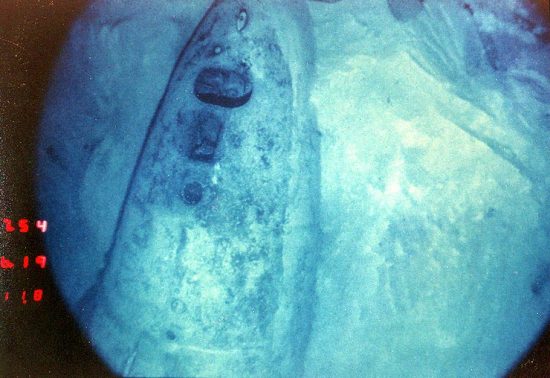
However, two books that describe the tragedy (All Hands Down by Kenneth Sewell and Scorpion Down by Ed Offley) point out that the submarine had been diverted from the original course presumably to collect intelligence information about Soviet flotialia in the Atlantic Ocean.
Official Navy sources confirm changing the course, but the goal of USS Scorpion’s mission remains classified.
Theory 2: Accidental Torpedo Explosion
Dr. John Craven, the Chief Scientist of the Navy’s Special Projects Office, has devoted almost 30 years to the Scorpion mystery. His findings suggest that the submarine was hit by her own torpedo either because of the malfunctioning batteries that had a tendency to overheat and could have caused a fire in the torpedo unit or due to the accidental activation of torpedo inside the tube.
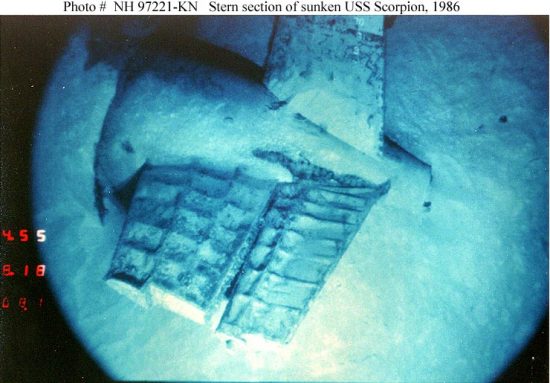
Theory 3: Hydrogen Explosion
Bruce Rule, the analyst for the Integrated Undersea Surveillance System (IUSS) has provided the theory that hydrogen jammed in the recently changed ventilation line up might have caused the explosion during the surfacing to periscope depth.
The theory is supported by 2 explosions aboard a submarine picked up by hydrophones and the fact the Scorpion’s headlight was in an open position as if she was surfaced at a time.
Official US Navy Conclusions:
The Naval Board has also considered versions of the trash disposal unit failure causing flooding as well as structural damage, but the court returned an open verdict. In the 1993 report there is some admission of Dr. Craven’s theory:
“The first cataclysmic event was of such magnitude that the only possible conclusion is that a cataclysmic event (explosion) occurred resulting in uncontrolled flooding (most likely the forward compartments).”
However, the true reasons behind USS Scorpion’s loss remain unknown.
P.S. Five more submarines. i.e. USS Thrasher (the USA), INS Dakar (Israel), Minerve (France) and K-129 (Soviet Union), have disappeared mysteriously during 1968.
In 2012, US Submarine Veterans society together with relatives of USS Scorpions crew called for the reopening of the investigation on the submarine. The Navy has rejected the request.
 Author: Filip Drozda
Author: Filip Drozda
Filip is a maritime professional. He has been working in the shipping industry for 25 years. Mr. Drozda is an expert in crewing for dry cargo and offshore vessels; has a strong technical background, speaks Polish, English and Russian languages.

